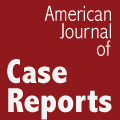Association between temporomandibular disorder and bruxism among children aged 5 to 11 years
Joelma Magalhães da Costa, Rafael Ribeiro, Tabajara de Oliveira Gonzalez, Cid Andre Fidelis de Paula Gomes, Fabiano Politti, Daniela Aparecida Biasotto-Gonzalez
Med Sci Tech 2012; 53(1): RA33-36
ID: 883049
Available online:
Published: 2012-06-15
Background: Temporomandibular disorder (TMD) is a multifactor condition, with bruxism (teeth clenching/grinding) as one of the triggering factors, leading to isolated or complex problems in the stomatognathic system. The aim of the present study was to investigate the association between TMD and bruxism in male and female children aged 5 to 11 years.
Material/Methods: An observational, cross-sectional study was carried out with 104 children [60 males (57.69%) and 44 females (42.31%)] between 5 and 11 years of age (mean: 7.54±1.5 years). The Fonseca Patient History Index was used for the diagnosis and determination of TMD. A clinical evaluation performed by a dentist and a physical therapist was used to identify the presence or absence of TMD and bruxism, the results of which were compared to the findings of the questionnaire, which provided the degree of TMD.
Results: Among the 104 participants, 52 (50%) exhibited no signs or symptoms of TMD, whereas 46 (44.23%) exhibited mild TMD and six (5.77%) exhibited moderate TMD. Thirty children (28.85%) had the habit of teeth clenching/grinding. A significant association was found in boys between the degree of TMD and bruxism (p<0.001). Girls had a 3.35-fold greater chance of exhibiting higher degrees of TMD.
Conclusions: There was a correlation between TMD and bruxism among the children studied. The boys displayed an increase in TMD with this parafunctional habit and the girls proved more vulnerable to higher degrees of TMD.
Keywords: Child, Temporomandibular Joint Dysfunction Syndrome, Questionnaires, Bruxism



